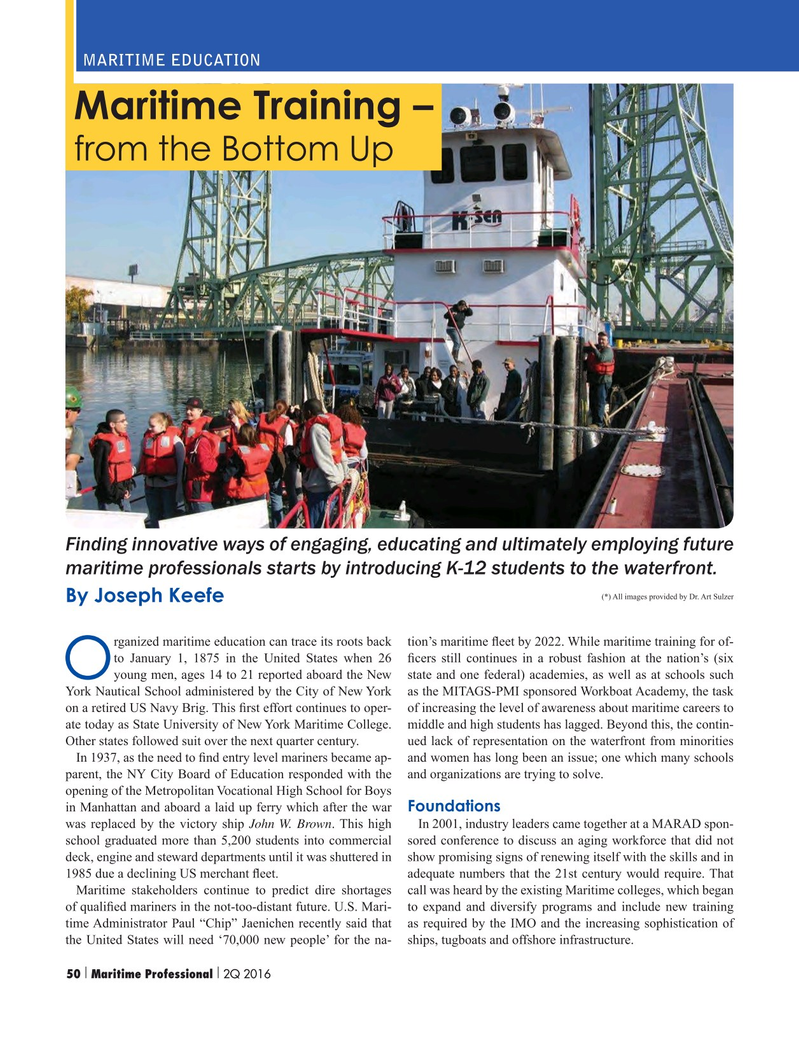
Page 50: of Maritime Logistics Professional Magazine (Q2 2016)
Energy Transport & Support
Read this page in Pdf, Flash or Html5 edition of Q2 2016 Maritime Logistics Professional Magazine
MARITIME EDUCATION
Maritime Training – from the Bottom Up
Finding innovative ways of engaging, educating and ultimately employing future maritime professionals starts by introducing K-12 students to the waterfront. (*) All images provided by Dr. Art Sulzer
By Joseph Keefe rganized maritime education can trace its roots back tion’s maritime ? eet by 2022. While maritime training for of- to January 1, 1875 in the United States when 26 ? cers still continues in a robust fashion at the nation’s (six
O young men, ages 14 to 21 reported aboard the New state and one federal) academies, as well as at schools such
York Nautical School administered by the City of New York as the MITAGS-PMI sponsored Workboat Academy, the task on a retired US Navy Brig. This ? rst effort continues to oper- of increasing the level of awareness about maritime careers to ate today as State University of New York Maritime College. middle and high students has lagged. Beyond this, the contin-
Other states followed suit over the next quarter century. ued lack of representation on the waterfront from minorities
In 1937, as the need to ? nd entry level mariners became ap- and women has long been an issue; one which many schools parent, the NY City Board of Education responded with the and organizations are trying to solve.
opening of the Metropolitan Vocational High School for Boys in Manhattan and aboard a laid up ferry which after the war Foundations was replaced by the victory ship John W. Brown. This high In 2001, industry leaders came together at a MARAD spon- school graduated more than 5,200 students into commercial sored conference to discuss an aging workforce that did not deck, engine and steward departments until it was shuttered in show promising signs of renewing itself with the skills and in 1985 due a declining US merchant ? eet. adequate numbers that the 21st century would require. That
Maritime stakeholders continue to predict dire shortages call was heard by the existing Maritime colleges, which began of quali? ed mariners in the not-too-distant future. U.S. Mari- to expand and diversify programs and include new training time Administrator Paul “Chip” Jaenichen recently said that as required by the IMO and the increasing sophistication of the United States will need ‘70,000 new people’ for the na- ships, tugboats and offshore infrastructure.
50 Maritime Professional 2Q 2016| | 50-63 Q2 MP2016.indd 50 5/19/2016 11:44:36 AM

 49
49

 51
51
